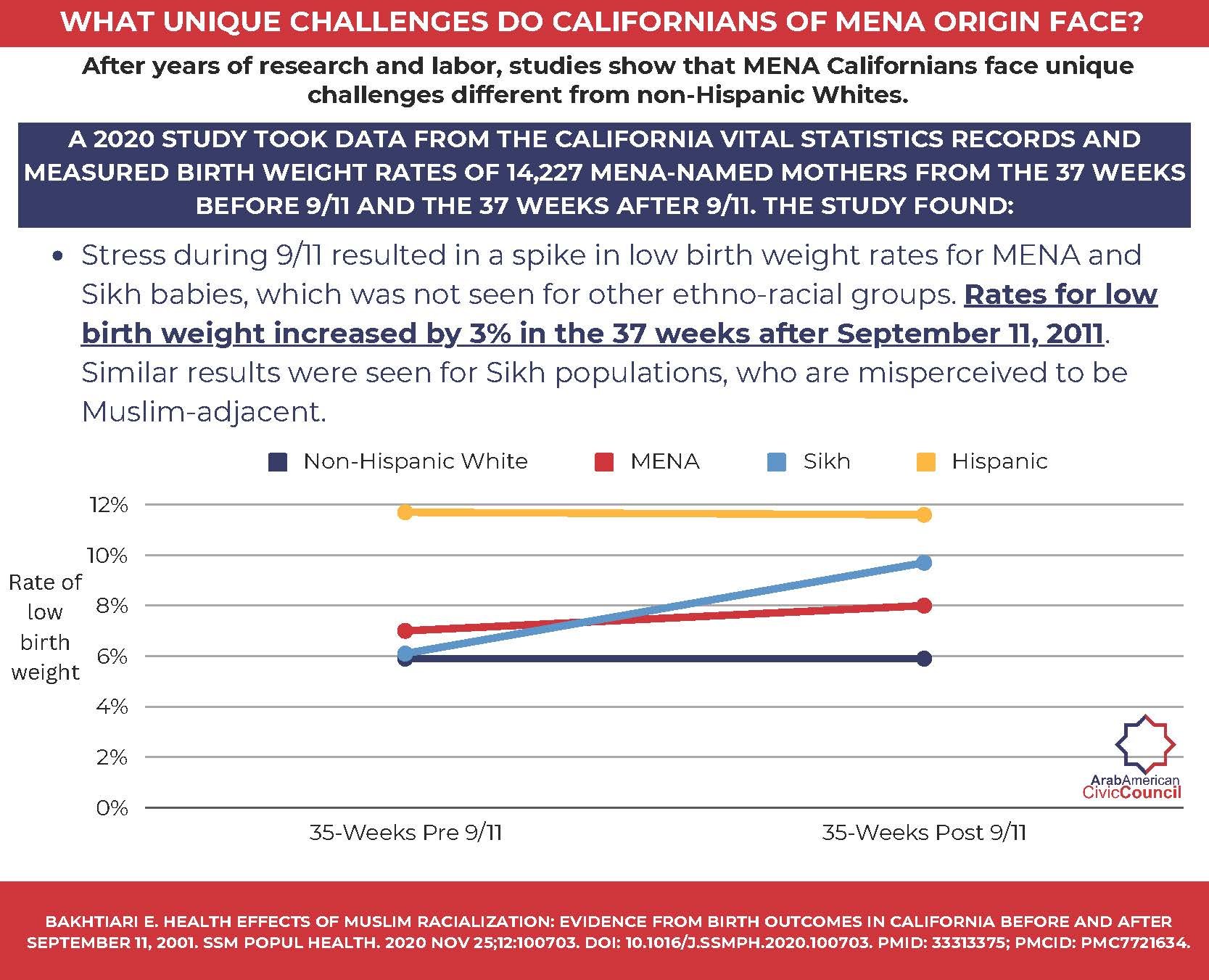Facts.
MENA-Americans are a large, historic and important community in California. Federal and State classification directly impacts the lives of our people everyday in the United States. MENA-American must no longer be marginalized in California. Because of lack of Census classification, MENA-Americans the United States are invisibilized, underfunded, underresourced, and undercounted. This impacts everything from healthcare and business to lobbying and voting rights. This institutional barrier has real impact on a wide range of issues. We need a MENA category now. Learn some of the reasons why below.
FACTORS IMPACTING CALIFORNIA’S MENA POPULATION
Collecting data on Californians who identify with the MENA region has been challenging for researchers and professionals who work in their population. Because the federal government lists the MENA population under the White category, it isn’t easy to disaggregate their information from the rest of the population.
However, researchers have labored and worked hard to uncover data that reflects the challenges facing the MENA community. This data has illustrated various challenges of communities from the MENA region, such as different health disparities, and higher traumatic stressors.
Examples of the Impact of MENA exclusion on the United States Census:
MENA-American small businesses are the backbone of our communities, but owners suffer from a variety of cultural, linguistic, political, and spatial barriers to stability. Still, we're not counted in the data so we are not protected by the Small Business Act.
MENA-Americans currently do not receive federal, state, and local recourse because they are not classified on the U.S. Census
MENA-Americans face harsh realities when it comes to our health but because we're not counted in government data, we don't get the equitable support we need and are excluded from health programs that would address these issues. This has direct impact on our lives.
MENA communities, so we do not receive equitable protection of voting rights. For example, Los Angeles was recently split into multiple districts that cut through MENA communities. MENA voting protections were not considered.
MENA-Americans continue to face hate crimes, marginalization and discrimination but are unable to address such realities because of lack of classification, nor are governments and scholars able to demonstrate gaps in equality of opportunity. Lack of data translates to more inequalities and lack of evidence.
MENA communities are not given the same opportunities in education as other underserved communities. For example, many states do not collect data MENA students so there is no way of tracking their progress in the educational system and addressing opportunity gaps. This also impacts the funding of schools serving a large population of MENA students. MENA-American students nationally overwhelmingly do not receive culturally responsive instruction, trauma-informed instruction and English language acquisition that address their unique linguistic and cultural positioning, experiences and needs, because of the lack of data and lack of research on ways to serve this community within U.S. public schools. As just one example, the State of California does not track the progress of MENA students in the California dashboard so we don't know the graduation, suspension and absentee rates of these students in California schools.
Neither the National Endowment for the Arts or the National Endowment for the Humanities included MENA-Americans in their Equity Action Plans, though they were mandated by congress to ensure equal access to the arts and humanities for people of all backgrounds.
MENA cultural institutions, language programs, schools, and MENA-American Studies departments have to largely be self-funded and sustained and do not have access to substantial funding sources other communities do. Turn-over and assimilation over years makes this increasingly difficult. This means every year MENA-Americans become increasingly unconnected to their community and culture because of structural access gaps. Furthermore, MENA-American grassroots institutions must constantly spend extensive time and labor on sustainability instead of growth and face systemic barriers to access.




